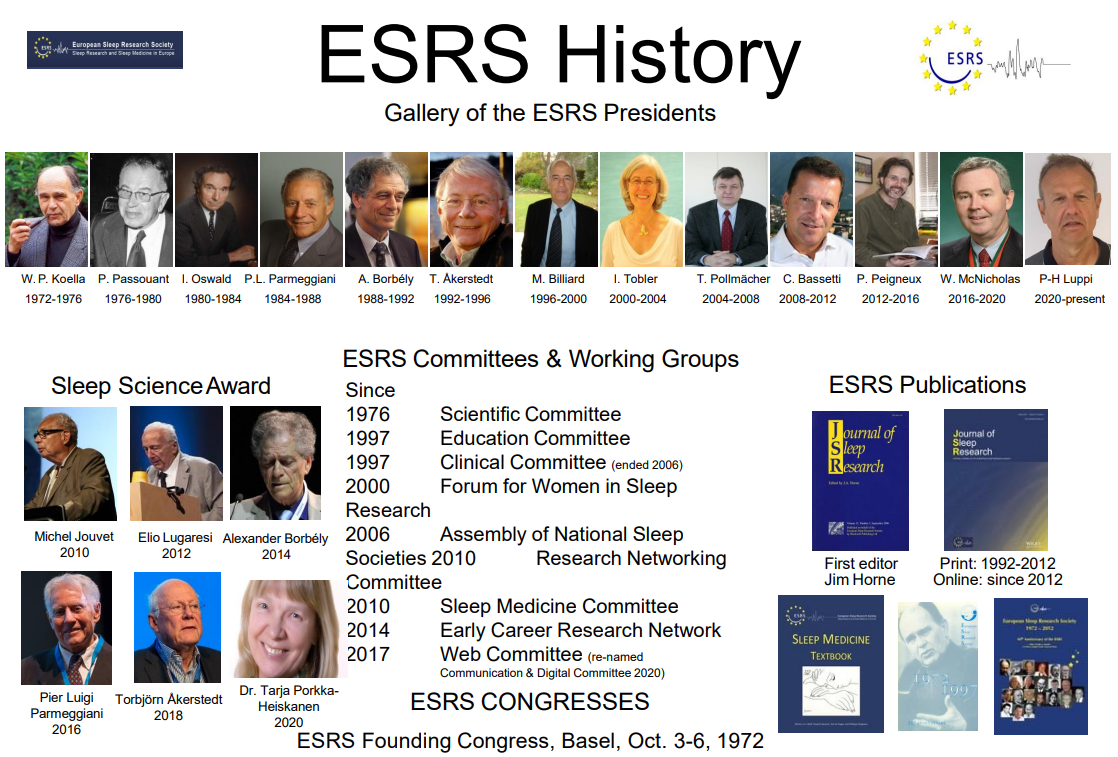Sleep Science Friday: Gestalt Therapy and Sleep
Gestalt Therapy is a holistic and person-centred form of psychotherapy that focuses on several aspects, including one’s present life and challenges instead of past experiences, on one’s relationship with their therapist and others and also a deeper sense of awareness of the environment or the world around them.
Prof. Brigitte Holzinger, Director of the Institute for Consciousness and Dream Research and Founding Member of the Austrian Sleep Research Association is a clinical psychologist who practices the Gestalt Therapy approach. She speaks with ESRS’s Dr. Lyudmila Korostovtseva on what Gestalt Therapy is and its application in the sleep field.
What is Gestalt Therapy and how does it work?
Prof. Holzinger posits that Gestalt Therapy (otherwise known as “therapy of emotions” or “therapy of feelings”) is one of the most creative approaches amongst the psychotherapeutic techniques. It has several roots, namely psychoanalysis (depth psychology approach) and Gestalt psychology/theory – the “old German approach” to perception psychology.
Key to this is understanding that perception is something that needs to be learned – knowing how to change one’s way of seeing the world. Gestalt Therapy is very integrative, as it allows for research on how perception works. There are two key approaches in Gestalt Therapy: the physiological approach and the phenomenological approach, both of which are equally important.
Another key aspect of Gestalt Therapy is awareness, of both the client and the therapist. The therapist is also able to speak freely as opposed to abstaining as in depth psychology. This develops a greater level of authenticity between both parties, which is also aanother crucial element of Gestalt Therapy.
Components of Gestalt Therapy
Gestalt Therapy is also based upon several approaches called the three E’s:
- Experiential approach – experiencing one’s problems rather than analysing them
- Existentialistic approach – focusing on the here and now, not the past or future
- Experimental approach – trying something new or what one usually wouldn’t do
How does Gestalt Therapy help people with sleep problems, and which sleep disorders are in the focus of Gestalt Therapy?
Prof. Holzinger states that Gestalt Therapy is based on a foreground and background of perception. Sleep (or sleep problems), can sometimes be the manifestation of a problem (foreground) that needs to be solved (background). Using Gestalt Therapy in combination with other treatment such as CBT-I, Sleep Coaching and the Role Play Method, sleep disorders such as insomnia and nightmares can be effectively treated.
For example, with insomnia, CBT-I is able to treat the symptom of not being able to sleep, while Gestalt Therapy can treat the personal situation that brought the individual to that point.
Listen to Prof. Holzinger for more on Gestalt Therapy and Sleep
Recent publications from ESRS members:
The pre-sale of the 2nd edition of the Sleep Medicine Textbook is officially open. This was a collaboration of approximately 150 experts culminating in the largest ESRS publication to date.
Just published an article? Want your research to be featured? Saw something interesting? Contact us at esrs@esrs.eu.
ESRS Reminders
GEF Call for New Effective Members
There are only a few days remaining for you to submit your applications to join the new Gender Equality Forum (formerly Forum for Women in Sleep Research). This is your chance to help balance the gender scales in sleep medicine and sleep research. Do not miss this opportunity to get involved.
For more information on the GEF’s mission, what will be expected of effective members and how to apply, view the announcement here. Applications will be accepted until midnight CET, 31-July 2021.
Sleep Deprivation Webinar on Demand
ESRS members can watch the Sleep Deprivation webinar on demand in the e-sleep lessons section of the ESRS website. There you will also find the COVID-19 webinar and additional learning materials on sleep.




